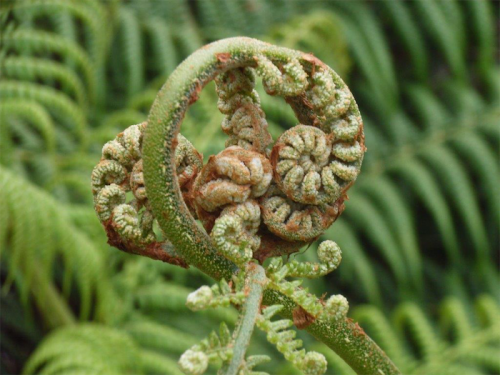
UP to 80 per cent of tree ferns die due to lack of information about siting and watering requirements.
Tree ferns, or Dicksonia antarctica, are sold in increasing numbers. Sometimes they are taken illegally, but more typically, tree ferns are removed from the bush by qualified horticulturists and sold only under strict licensing regulations by the various state park and wildlife services and the Commonwealth government.

All retail tree ferns are tagged with a serial number issued by the particular government authority and markets are regularly checked for ferns being sold illegally.
Some of the healthiest tree ferns are from Tasmania, almost their natural home where, when sold, have a solid fern stem more than 30cm.
I saw one large unit development, not far from where I live, where ferns had been planted exposed to full sun plus the reflected heat from the white building. They lasted a couple of months and only because it was cooler!
If you have no natural shade plant on the south side of the home, use a 90 per cent shadecloth.
Have a look at tree ferns growing in the Rainforest Gully at the National Botanic Gardens or on Clyde Mountain. Here are the main pointers to prevent further tragedies:
- Buying: Always select healthy ferns free from physical or insect damage. Always buy from a registered garden centre and make sure the fern has the authorised tag.
- Siting: Tree ferns require shade, ample moisture and good drainage. They must be protected from severe frost. In their natural environment they are shaded by overhead evergreen trees.
- Planting: In heavy soils dig in plenty of rotted organic matter such as cow manure (not chook), decomposed leaves with some washed river sand. In their natural state they continually benefit from falling leaves. The use of Multicrop liquid Ground Breaker will be beneficial in clay soils rather than gypsum. When planting, place one third of the trunk in the ground and fill in with soil with the added organic matter. Make a small bank around the trunk to hold a minimum of a bucket of water to which has been added liquid seaweed plant food. This will encourage hormonal activity and new root growth.
- Watering: Tree ferns should be watered in the crown as well as the base. With drip irrigation, it’s ideal to connect a 13mm line to the top of the fronds making a circle. Deep water around the base once a week, keeping in mind tree ferns come from high rainfall areas.
- Feeding: Only use certified organic fertilisers and, ideally, apply on a three-month cycle. I recommend the liquid variety rather than the pellets to penetrate the roots faster.
- Pests: The only real pests are scale insects, usually indicated by ants. These in themselves don’t damage the fronds; they merely feed on the sugars sucked out of the scale insects. If in doubt, take a sample in a plastic bag to your nearest garden centre for identification. Multicrop certified organic EcoPest will fix scale, mites and other sucking insects.

The Rainforest Gully at the Botanic Gardens.
Jottings…
- If the leaves on deciduous trees are suddenly turning yellow, it’s not autumn arriving early. At this stage they are almost certainly suffering from lack of water. A good, really deep water is essential. Silver birch, Golden Elm and Ash are particularly vulnerable.
- It’s vital not to let lemon trees dry out and, as the fruit is developing, feed very regularly. Yates Liquid Dynamic Lifter, Neutrog Seamungus or Maxicrop seaweed plant food are all ideal.
- Resist pruning shrubs until the hot weather has gone, but deadhead perennial plants after flowering.
Who can be trusted?
In a world of spin and confusion, there’s never been a more important time to support independent journalism in Canberra.
If you trust our work online and want to enforce the power of independent voices, I invite you to make a small contribution.
Every dollar of support is invested back into our journalism to help keep citynews.com.au strong and free.
Thank you,
Ian Meikle, editor




Leave a Reply